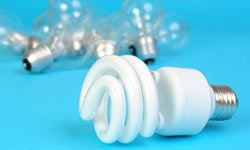How many MBAs and Ph.D.s does it take to change a light bulb? Ed Crawford scratches his head and ponders the question every day. For chief executive of the North American lighting division of Philips Electronics, the world's largest lighting company, the punch line is elusive.
While most people still rely on Thomas Edison's traditional incandescent light bulb to illuminate their lives, businesses and governments are slowly replacing the 130-year-old technology with more energy-efficient bulbs. Not only does Crawford want to make sure his company creates the best and cheapest products, he also needs to change the minds of consumers wary of the new technology [source: Glader].
Advertisement
Pushing the changeover is the Energy Independence Act of 2007, which mandates that 100-watt incandescent lights be phased out by January 2012 and the plug pulled on all remaining incandescent bulbs by 2014 [source: Glader].
Why the change? Ninety percent of the energy used by an incandescent bulb is wasted, while only 10 percent is converted into light [source: EnergySavers.gov]. The new light bulbs save energy by turning more electricity into light. The Natural Resource Defense Council says by 2020 the law will reduce energy costs by $100 to $200 per household each year. That's enough energy savings to eliminate 30 power plants [source: Glader].
Energy-efficient bulbs are one way to reduce your energy bill, but there are others. Go to the next page and find out how we can all save money on household lighting.


